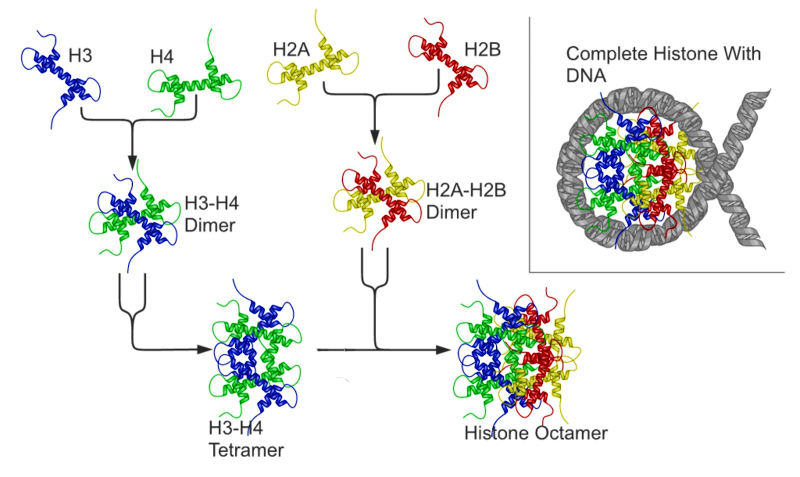Attribution: Darryl Leja, NHGRI.
More than just the hereditary material, DNA is in constant
use within cells. DNA is a dynamic
substance; the quintessential double-helix is in constant and intimate
connection with other molecules, namely protein complexes known as nucleosomes that are composed of histones. DNA coils around histones, which in turn coil
and form higher-order structures as well.
This all creates a complicated three-dimensional environment in which
DNA is not easily accessible at all times.
The Nucleosome. Attribution: Richard Wheeler
[CC-BY-SA-3.0 or GFDL], via Wikimedia Commons.
This combination of DNA and associated proteins is known as
chromatin and it is chromatin that allows for fine-tuned regulation of gene
expression. Both DNA and histones in
chromatin are the targets of modifications.
The addition of chemical groups, such as methyl moieties, changes
the properties and accessibility of DNA within chromatin. As not every gene is expressed at all times
and in all tissues, the complex combination of chemical modifications in chromatin
sets up the mechanism by which gene expression is regulated, this often called
the chromatin code. By adding methyl or acetyl groups to the ends
of histone molecules, the so-called histone tails, the degree to which those
tails can physically interact with nearby DNA is altered. This creates two fundamental types of
chromatin: euchromatin and heterochromatin.
In a euchromatic state, histone molecules are associated with DNA but
not so tightly as to preclude the molecular machinery responsible for gene
expression from accessing the DNA, thereby allowing for gene expression and RNA
production. In contrast, heterochromatin
is very tightly packaged and dense, and therefore genes associated with
heterochromatin are thought to be blocked from expression.
There are many great resources available regarding DNA and chromatin
and its function in biology, including the ModEncode EducationalSupplement.

